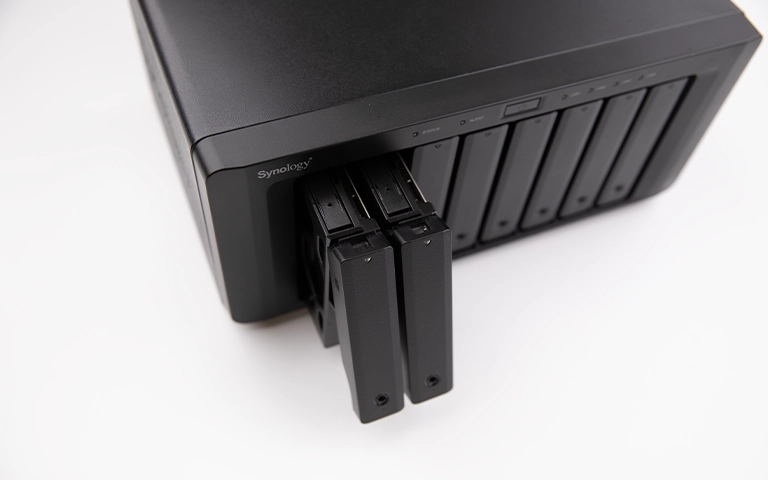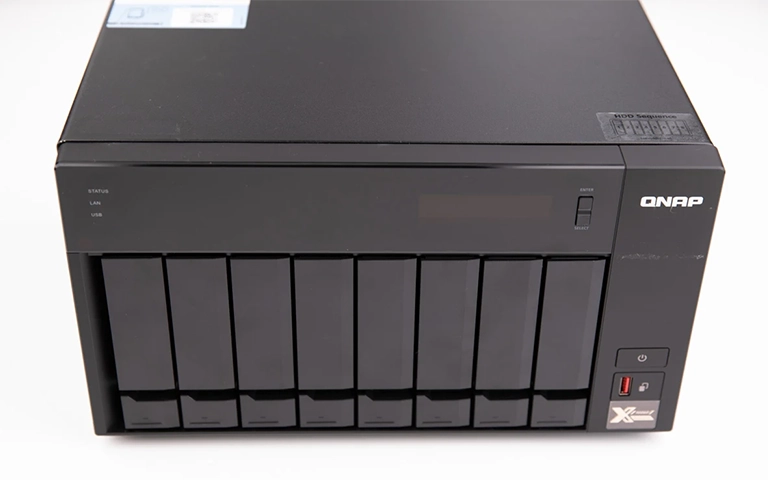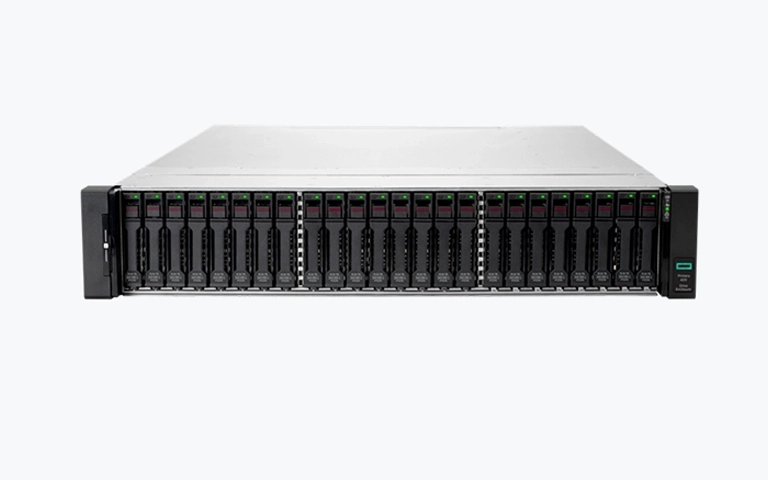Modern businesses depend on reliable data storage systems to manage and share critical information. Among the most widely used solutions are Network-Attached Storage (NAS) and Storage Area Network (SAN). While both provide centralized storage, they operate very differently and serve distinct business needs.
Understanding the difference between these two systems is essential when designing an efficient storage infrastructure. NAS offers simplicity and affordability, making it ideal for small and medium-sized teams, while SAN delivers speed, scalability, and performance for enterprise environments.
In this guide, we will compare NAS vs SAN, explore their key advantages, and help you decide which solution best fits your organization’s data management goals.

What Is NAS (Network-Attached Storage)
Network-Attached Storage (NAS) is a file-level storage solution that connects directly to your local network, allowing multiple users and devices to access data simultaneously. It is commonly used in small and medium-sized businesses for centralized file sharing, media storage, and automated backups.
NAS systems are built with dedicated operating systems that manage permissions, security, and remote access. They are easy to configure and can expand storage by adding more drives or upgrading capacity.
Most NAS devices rely on specialized drives designed for continuous operation, such as WD Red or Seagate IronWolf. These models are optimized for multi-user environments and long-term reliability.
Learn more about how these drives function in our guide on What Is NAS Hard Drive.
NAS storage provides convenience and affordability, making it an excellent choice for offices that prioritize simple data access over complex infrastructure.

What Is SAN (Storage Area Network)
Storage Area Network (SAN) is a high-performance, block-level storage system designed for enterprise environments.
Unlike NAS, which connects to a standard network, SAN operates on a dedicated network that links multiple storage devices directly to servers. This structure allows for faster data access, lower latency, and better scalability.
SANs typically use Fibre Channel (FC) or iSCSI connections to deliver rapid and reliable performance.
They are ideal for data centers, virtualization, database applications, and any workload requiring consistent high-speed access to large amounts of data.
Because of their complexity, SAN systems require specialized management tools and trained administrators. However, their performance benefits are unmatched for mission-critical operations.
To better understand how SAN compares with other architectures, see our article on SAN vs DAS, which explains how direct-attached storage differs from network-based systems.

NAS vs SAN – Key Differences
Although NAS and SAN share the goal of providing centralized data storage, they differ greatly in structure, performance, and scalability. Understanding these differences helps determine which setup aligns better with your business requirements.
While both serve as centralized storage, NAS focuses on simplicity and cost efficiency, whereas SAN prioritizes speed, redundancy, and scalability for large-scale infrastructures. You can also explore more technical comparisons in our post on NAS vs SAN.
Advantages of NAS Systems
NAS solutions are popular for small and medium-sized businesses because they offer an efficient balance of performance, affordability, and simplicity. Here are the key benefits of using NAS:
Easy Deployment: NAS devices are simple to install and manage, making them accessible even to teams without dedicated IT staff.
Cost-Effective: Compared to SAN systems, NAS offers a lower entry cost while still providing reliable centralized storage.
Flexible Data Sharing: Multiple users can access and edit files simultaneously across the network, improving collaboration and workflow.
Expandable Storage: Most NAS enclosures allow users to add or replace drives as data needs grow.
Energy Efficient: NAS units consume less power than enterprise-grade SAN systems, making them ideal for smaller setups.
Despite their benefits, NAS systems can still encounter issues such as overheating or RAID configuration errors. For more insight into common risks, see our post on NAS Data Loss Causes.
Advantages of SAN Systems
SAN systems are built for demanding workloads that require high performance, reliability, and scalability. They are the backbone of many enterprise infrastructures due to the following advantages:
High-Speed Performance: SAN delivers fast data transfer rates and low latency, ideal for virtualized environments and high-transaction databases.
Centralized Storage Management: Multiple servers can access shared storage resources efficiently, simplifying management across large networks.
Enhanced Scalability: Additional storage capacity or servers can be integrated into the SAN without downtime, ensuring continuous growth support.
Improved Reliability and Redundancy: SANs typically use advanced RAID configurations to maintain uptime and prevent data loss. Learn more about these options in our guide on RAID Configurations for Server.
Optimized for Enterprise Applications: SAN’s architecture supports business-critical systems that require stable and consistent access to large datasets.
For organizations handling large-scale data operations, SAN offers performance and control far beyond what typical NAS environments can provide.
Fast turnaround times for business-critical data
Choosing the Right Storage for Your Business
When deciding between NAS and SAN, consider your company’s size, workload, and performance requirements. Both solutions are effective, but each serves different operational goals.
NAS is the better choice for small and medium-sized businesses that need affordable, centralized file sharing without complex maintenance. It’s ideal for backups, collaboration, and light data workloads.
SAN, on the other hand, is designed for large enterprises that rely on high-speed data processing, virtualization, or mission-critical databases. It provides unmatched performance and scalability but comes with higher implementation and management costs.
For teams that prioritize accessibility and collaboration, enterprise NAS storage can provide a balanced solution. Learn more about advanced configurations in our post on Enterprise NAS Storage.
Ultimately, your decision should align with your data volume, required uptime, and available IT resources.

When Data Loss Occurs – Professional Recovery Solutions
Regardless of whether you use NAS or SAN, both systems can fail due to hardware malfunction, controller issues, or human error. When this happens, attempting DIY recovery can worsen the problem and make professional data retrieval more difficult.
At RAID Recovery Services, our engineers specialize in enterprise-level data recovery for both NAS and SAN environments. Using advanced imaging techniques, cleanroom procedures, and precise RAID reconstruction, we restore access to valuable data securely and efficiently.
Our team has successfully handled numerous recovery cases, including complex NAS arrays and enterprise SAN infrastructures. For an example of a successful NAS recovery, see our detailed NAS Data Recovery Case.
If your storage system becomes inaccessible or shows signs of failure, contact RAID Recovery Services immediately for professional evaluation and recovery assistance.
Trust the experts with proven results
Frequently Asked Questions
What is the main difference between NAS and SAN?
NAS (Network-Attached Storage) operates at the file level and connects to a local network, while SAN (Storage Area Network) provides block-level access through a dedicated high-speed network. NAS is simpler and more affordable, while SAN offers superior performance and scalability.
Which is better for small businesses, NAS or SAN?
NAS is the better option for small and medium-sized businesses because it is easy to install, manage, and expand. SAN is best suited for enterprises that require high-speed data access and complex storage management.
Can NAS and SAN be used together?
Yes. Many organizations use both systems in hybrid environments — NAS for file sharing and SAN for applications that need fast, block-level access. This combination allows flexibility and performance optimization.
Why does a SAN system cost more than a NAS?
SAN systems require dedicated hardware, specialized networking equipment, and advanced configuration, which increase cost. NAS devices, on the other hand, run on existing network infrastructure and need less maintenance.
Can data be recovered from a failed NAS or SAN?
Yes. Both systems can experience hardware or configuration failures, but data can be recovered by professionals. Our engineers specialize in NAS and SAN recovery and use cleanroom facilities and advanced RAID reconstruction techniques to restore lost files.